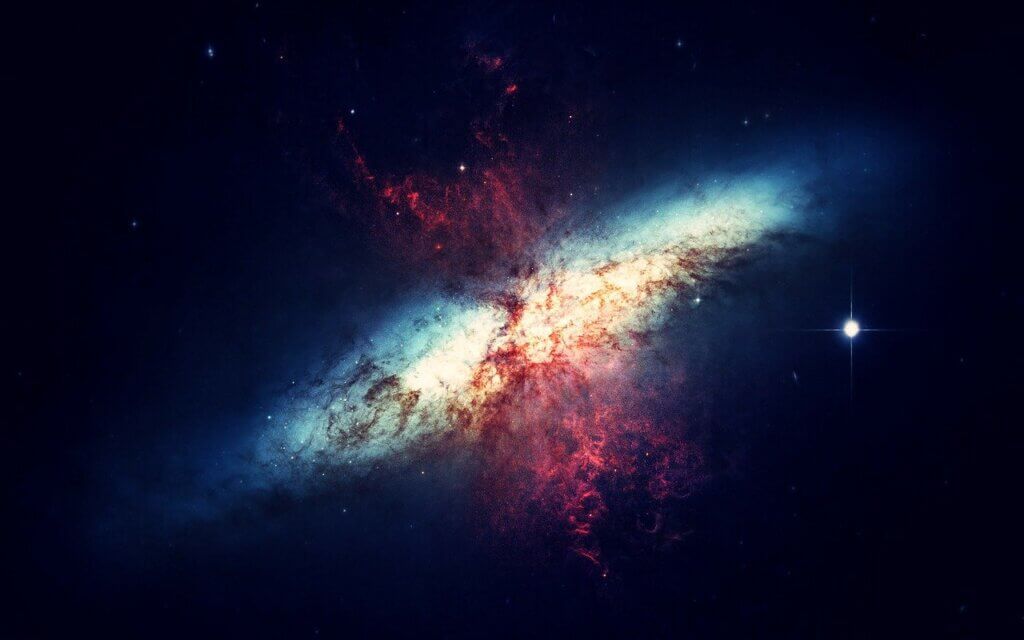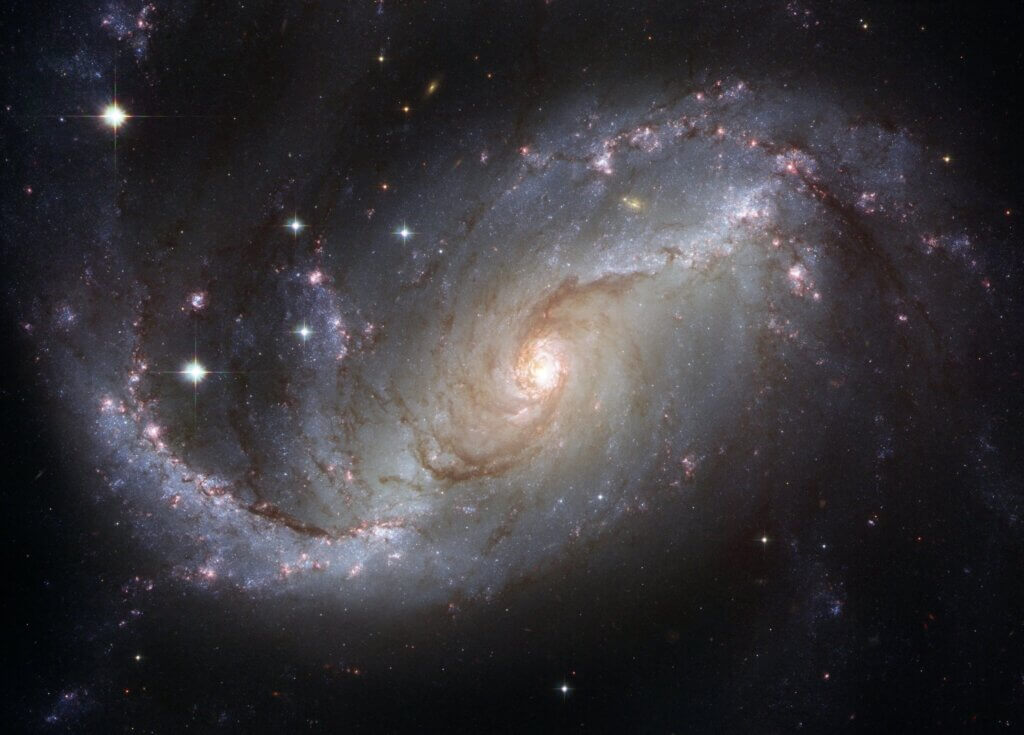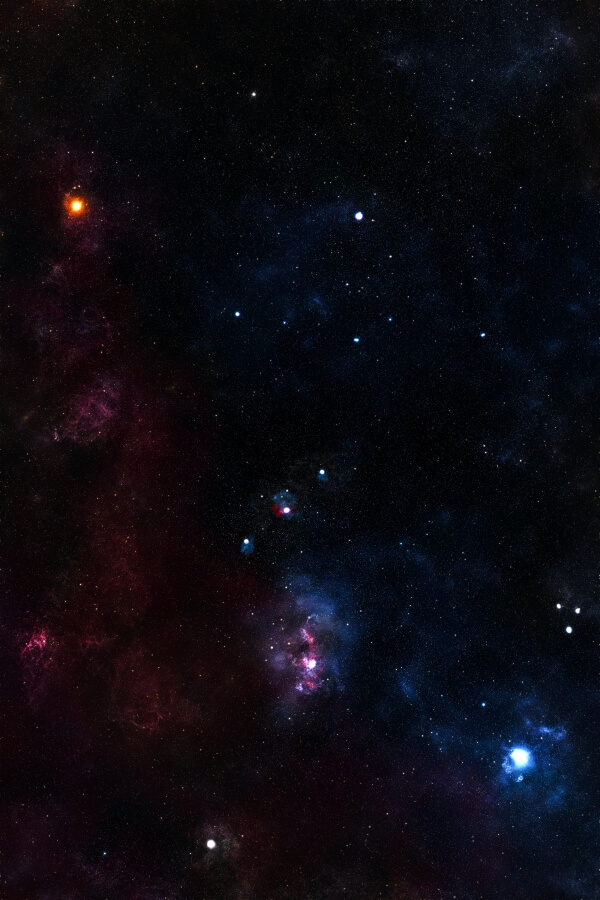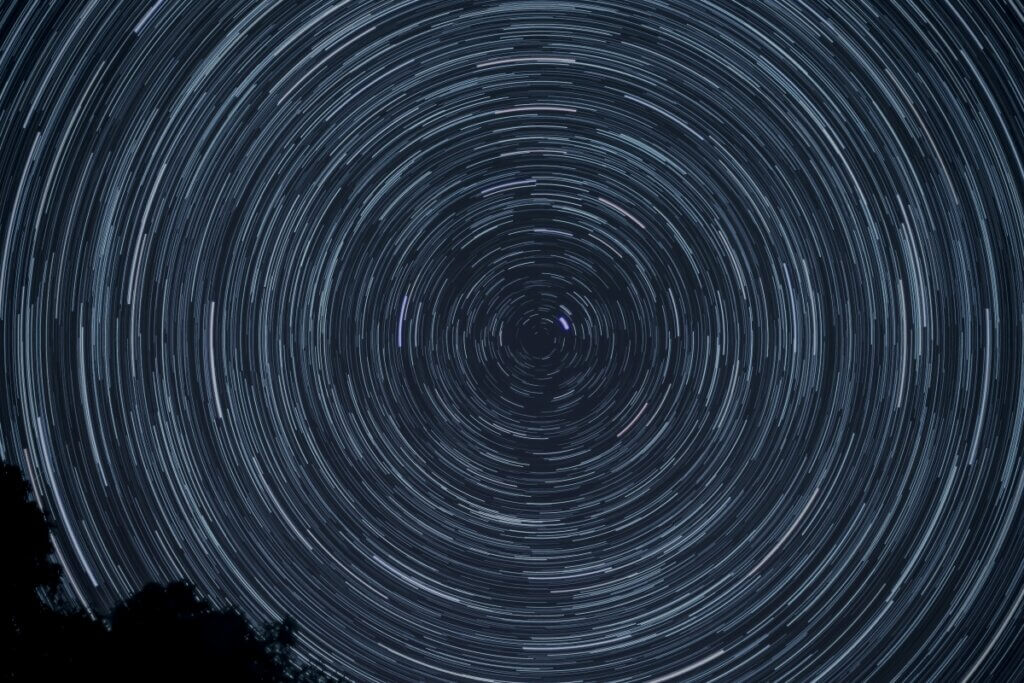We can see stars in the sky on any clear night as twinkling little dots. By definition, they are an astronomical object that are essentially balls of gas that are typically made of helium and hydrogen.
They are kept together by their own gravity. At the core of the star, several nuclear fusion reactions take place which produces photons as well as heat.
If you ever asked yourself, “is the sun a star,” well, the answer is yes. It is also classified as one of the white stars and is the closest one to planet Earth. There are many different types of stars and we will see what they are in this piece. Let’s begin.
Types of Stars
The star formation theory tells us that these little twinkling, sparkling astronomical objects are created as clouds of gas that have collapsed into themselves. The material in these clouds gets heated up and the collapse happens because of its gravity.
When the temperature of the gas in the cloud reaches roughly 18 million degrees Fahrenheit, the nuclei in the hydrogen atoms start fusing to form the nuclei of the helium atoms. That’s how each star is born. Eventually, the energy from this fusion starts radiating outwards and the collapse of the gas cloud comes to a stop.
UY Scuti is a variable hypergiant that is known to be the biggest star in the universe. What is a variable hypergiant? To understand that and more, let’s look at the definitions of the many different types of stars in the universe.
Stars are segregated into different categories based on their temperature and spectra. There are seven different types of stars that are labeled as O, B, A, F, G, K, and M, according to the Morgan-Keenan system. O is the hottest and M is the coolest star type.
- O (Blue)
- B (Blue)
- A (Blue)
- F (Blue/White)
- G (White/Yellow)
- K (Orange/Red)
- M (Red)
Protostar

When a star is first formed, it is essentially a giant cloud of molecules that has collapsed into a smaller ball of gas. This is the beginning of its journey called stellar evolution and it stays this way for roughly 100,000 years. When the pressure and gravity in this ball of gas cloud increases, the protostar releases energy and collapses further.
This energy is the result of the heating of all the gravitational energy in the cloud. Following this nuclear fusion reactions start and they proceed to the next stage.
T Tauri Star
The next stage in the stellar evolution is when the protostar stage is nearing its end. At this point, the gravitational pressure of the star which is holding the gas ball together becomes the main source of all of its energy.
Now, T Tauri Stars do not have the necessary temperature or pressure at the core to start nuclear fusion reactions. However, they are bigger in size which makes them brighter. And they also have roughly the same temperature range as that of a main sequence star which is why they resemble the latter.
T Tauri Stars are known to have strong X-ray flares and vast areas of sunspots along with very powerful winds. In stellar evolution, stars are said to exist in this stage for nearly 100 million years. Then they move on to become main sequence stars.
Main Sequence Stars

About 90 percent of the stars that we know of, including the sun, are classified as main sequence stars. A main sequence star is a continuous sequence of stars that exist on various color-magnitude plots called the Hertzsprung-Russell diagrams. Their mass ranges from 1/10th to about 200 times the sun’s mass. There are four main sequence stars in our universe.
- Blue Stars: These are rare and are of the O or B spectral type. Their temperature is about 30,000 K and their lifespan is roughly 40 million years which is considered short. It usually ends in a supernova explosion that turns them into neutron stars or black holes.
- Stars that are of spectral type B and luminosity class V are called B stars. They are categorized as B-type main sequence stars. Their temperature is in the 10,000 to 30,000 K range and they are very bright and blue in color.
- Yellow Dwarfs: These stars are about 10 percent prevalent and are of the G spectral type. Their temperature is in the 5,200 to 7,500 K range and they last for 4 to 17 billion years. It ends when their hydrogen is exhausted and they turn into red giants.
- Orange Dwarfs: These stars are also about 10 percent prevalent and are of the K spectral type. Their temperature ranges from 3,700 to 5,200 K and they live for 15 to 30 billion years. In their habitable zone, they might have favorable conditions for exoplanets.
- Red Dwarfs: These stars are about 73 percent prevalent and are of the K and M spectral types. Their temperature is about 4,000 K and they live for multiple trillions of years. Even though they are not very bright, they are home to many stars in the Milky Way.
We don’t yet know how their life ends since no red dwarf has reached that stage since the creation of the universe. Proxima Centauri is a popular red dwarf.
Giants and Supergiants

These are formed when there is no more hydrogen left in a star and it starts to burn the helium in it. This results in the core’s collapse and the star gets hotter, turning it into a giant.
Supergiants are the largest of all the stars in the universe.
If the star has a lot of mass and is over 10x times bigger than the sun, it becomes a red supergiant. If it contracts itself, the star becomes a blue supergiant. There are four of these giants and supergiants in the universe.
- Blue Giants: These are quite rare and have the O, B and A spectral types. Their temperature ranges from 10,000 to 33,000 K and they live for 10 to 100 million years.
- Blue Supergiants: These stars are considered rare and have the OB spectral type. Their temperature ranges from 10,000 to 50,000 K and they live for only about 10 million years which is very short.
- Red Giants: A red giant star is about 0.4 percent prevalent and have the M or K spectral types. Their temperature is 3,300 to 5,300 K and they live for 0.1 to 2 billion years.
- Red Supergiants: These stars, also called a super red giant star, are about 0.0001 percent prevalent and are of the K and M spectral types. Their temperature ranges from 3,500 to 4,500 K and they live for 3 to 100 million years. Red supergiants are some of the biggest stars to exist in the universe even though they are not very massive or too bright.
Dead Stars

When there are no more fusion processes taking place in the core of a star, it is classified as a dead star. There are four of these in the universe.
- White Dwarfs: These stars are about 0.4 percent prevalent and are of the D spectral type. They are 0.1 to 1.4 times the sun’s mass and exist for 100,000 to 10 billion years. Since they don’t produce any energy, they cannot counteract their own mass.
- Neutron Stars: These stars are about 0.7 percent prevalent and are of the D spectral type. Their temperature is about 600,000 K and they are quite dim. They also have about 1.4 to 3.2 times the sun’s mass and live for 100,000 to 10 billion years, the same as white dwarfs.
- After the supernova explosion stage, stars reach the white dwarf stage. After that, they collapse some more and compress and turn into neutron stars. They are called so because they have neutrons which have a little more mass than protons and don’t have any electrical charge.
- If a star has more than three solar masses, it can collapse further and turn into a black hole. That can be avoided only if the neutron star has a high spin rate and has over three solar masses.
- Black Dwarfs: These are more theoretical in nature. They are described as white dwarfs without any leftover light or heat. And since white dwarfs have a higher life span in comparison, black dwarfs do not have time to be formed. So, if they do form, it will likely happen after the sun, which is a white star, dies.
- Black Holes: If a star has a high mass, after the supernova explosion stage it becomes a black hole instead of a neutron star or a white dwarf as is the case with smaller stars.
This happens because there is no pressure from the outside to oppose the star’s gravitational pull. As a result, it never stops collapsing and turns into a black hole from which nothing can escape. Not even light.
Failed Stars
These are objects in space that don’t have enough mass to fuse the hydrogen gas in it. So, they don’t shine and hence they have another name which is brown dwarfs. They are about 1 percent prevalent and are of the M, L, T or Y spectral types.
Obviously, their luminosity is very low to the point that they don’t even emit any visible light. Their temperature ranges from 300 to 2,800 K and the mass is about 0.01 to 0.08 times that of the sun. They are likely to live for several trillions of years.
In terms of classification, they are in between the stars with very little mass and gas planets with the most mass. That amounts to 13 to 80 times the mass of Jupiter.
Binary Stars

When two stars rotate around one piece of mass, they are referred to as binary stars. About 50 percent of all the stars we know are in a group of a minimum of two binary stars. Polaris is an example of a star that is a part of such a system.
- Double Star: When you see two stars appearing very close to each other in the night sky, you are looking at a double star. They are not actually that close but look like that because they are in one line of sight from the Earth.
- Eclipsing Binary: When two stars look so close to each other that they look like one star, they are called an eclipsing binary. But they have different levels of brightness because at any given point in time, one of them is eclipsing the other. When we look at an eclipsing binary from the Earth, they look tilted such that we see the edge of their orbital plane.
- X-Ray Binary Star: This is a set of two stars where one of them is a collapsed celestial object like a black hole, a neutron star or a white dwarf which makes them special. The regular star falls into the collapsed one and produces X-rays because its matter gets stripped before the fall.
- Cepheid Variable Star: Now, this one is called a variable star because the stars in this setting have different levels of luminosity. Cepheid variables are known to pulsate in terms of their size regularly and also change their brightness accordingly. When the size of the star increases, the brightness levels decrease and vice versa.
This variation might not be permanent and the fluctuations might happen only when one of the stars is unstable for a specific period of time. Two well-known examples of Cepheids are Delta Cephei and Polaris.
The Bottom Line
For all that we know about stars, there is a lot we don’t know because the truth of the matter is, that the universe is ever-expanding. But if you have a telescope and would like to travel the sky on a clear night, you might be thrilled to be able to name some of the many types of stars you spot.

